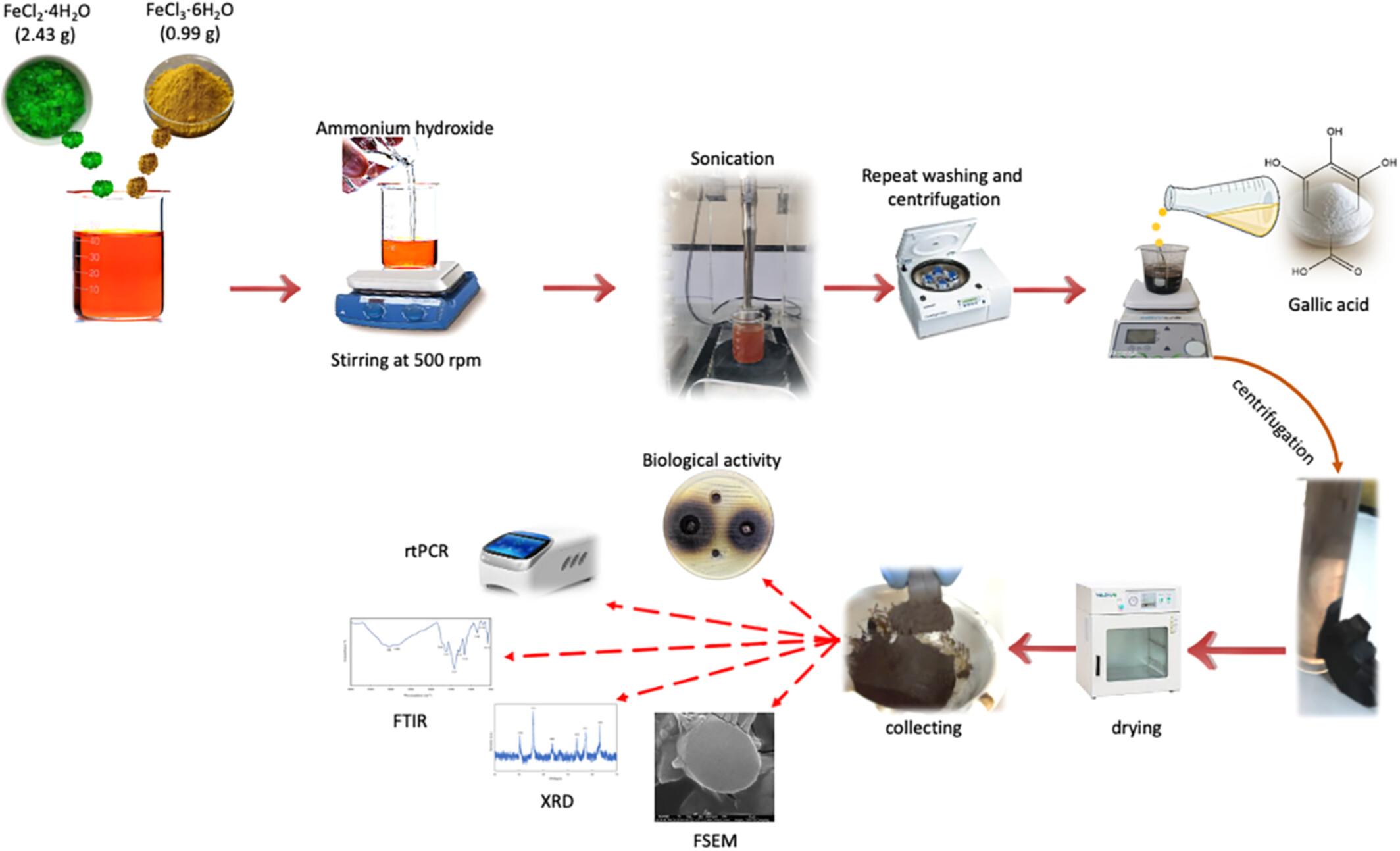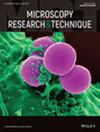Potential mechanism of gallic acid-coated iron oxide nanoparticles against associated genes of Klebsiella pneumoniae capsule, antibacterial and antibiofilm
Abstract
Antibiotic resistance has increased in recent years, especially for pathogens like Klebsiella pneumoniae. Discovering and developing new drugs is challenging due to the high resistance of pathogens. Metal nanoparticles have been widely used in recent years to overcome and treat infections. Gallic acid-coated iron oxide nanoparticles (IONPs-GA) were synthesized in a simple and cost-effective method. The morphology characteristics of synthesized IONPs-GA were analyzed using Fourier transform infrared spectroscopy (FTIR), x-ray diffraction analysis (XRD), and scanning electron microscope (SEM) analysis. IONPs were mostly spherical in shape with sizes ranging between 32 and 61 nm. All analyses used in this study confirmed the successful coating of gallic acid to iron oxide. Biological activities were studied phenotypically and on the molecular level, including antibacterial, antibiofilm, and mRNA levels of capsule-associated genes. The results showed high antimicrobial activity of the synthesized nanoparticles against different G+ve and G−ve bacteria. The highest activity was recorded against Staphylococcus aureus (43 mm) and K. pneumoniae (22 mm). The MIC of IONPs against K. pneumoniae was 3.12 mg/mL and SEM analysis showed adhering the IONPs-GA to the cell surface of K. pneumoniae resulted in disrupting the cell membrane. Different concentrations of sub-MIC inhibited K. pneumoniae biofilm formation with the highest inhibition percentage at ½ × MIC (66.86%). Also, the synthesized IONPs-GA differently affected the regulation and mRNA level of capsule-associated genes in K. pneumoniae. The results indicated that IONPs-GA could be useful in biological applications such as in drug delivery and treatment wide range of pathogens.
Research Highlights
- Gallic acid was successfully coated into iron oxide nanoparticles synthesized in a simple way.
- IONPs-GA was morphologically characterized using FTIR, XRD, and SEM.
- Evaluation the activity of IONPs-GA as antibacterial, antibiofilm, and study the potential level of mRNA affected by IONPs-GA


 求助内容:
求助内容: 应助结果提醒方式:
应助结果提醒方式:


